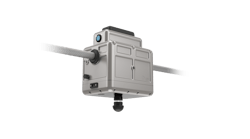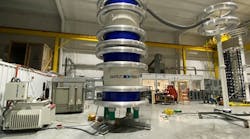In a development that could significantly enhance the reliability of transmission and distribution systems, the Electric Power Research Institute (EPRI) announced that it has completed and successfully tested a prototype design of a solid state current limiter (SSCL), a device that restricts fault current from new generation or transmission and reduces switching surges.
The solid-state technology developed by EPRI, with primary support from Con Edison of New York, addresses the challenges faced by utilities as new sources of power are introduced to existing transmission and distribution systems.SSCL restricts fault occurrences when new capacity, such as the additional generation created by independent power producers, is integrated into existing power systems, creating a greater likelihood fault current.
The device alleviates the short-circuit condition and gradually phases in the new current. This current-limiting capability improves fault isolation and network protection, and helps resolve critical situations that can cause voltage sags and swells and power outages.
The next step in development of the new technology is to test it at a host utility to determine if it is suitable for widespread deployment.
“The successful testing of SSCL is a milestone for EPRI and the industry as we work cooperatively to enhance of transmission and distribution systems,” said Arshad Mansoor, Vice President of Power Delivery & Markets at EPRI.“This technology will allow utilities to significantly increase the capability and reliability of their existing power lines.”
Currently, utilities’ only option in addressing fault current issues is to replace breakers with higher-rated equipment, a solution that may not be economical or viable because of space constraints, and the difficulties associated with outages necessary for replacement may be severe. In addition, breaker replacements alone may not eliminate mechanical and magnetic bracing issues for other equipment that high fault currents pass through.
“The Solid State Current Limiter demonstrates that we now have a new piece of equipment able to safely withstand the impact of and limit prospective fault currents,” said Patrick Di Lillo, technical specialist at Con Edison.“This newly developed device can be used to mitigate the effects of the increased capacity required to serve increasing loads in our urban centers.We have already begun work to migrate this technology to higher normal current and voltage ratings."
Voice your opinion!
Voice your opinion!
To join the conversation, and become an exclusive member of T&D World, create an account today!
Latest from Test and Measurement
Latest from Test and Measurement

